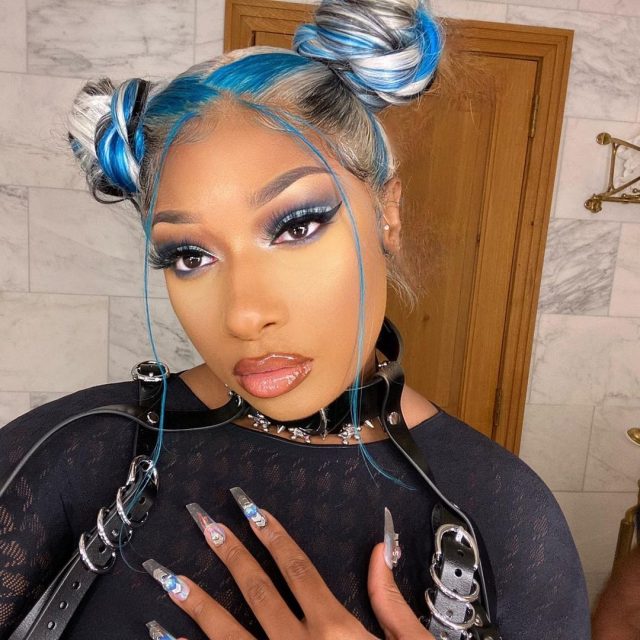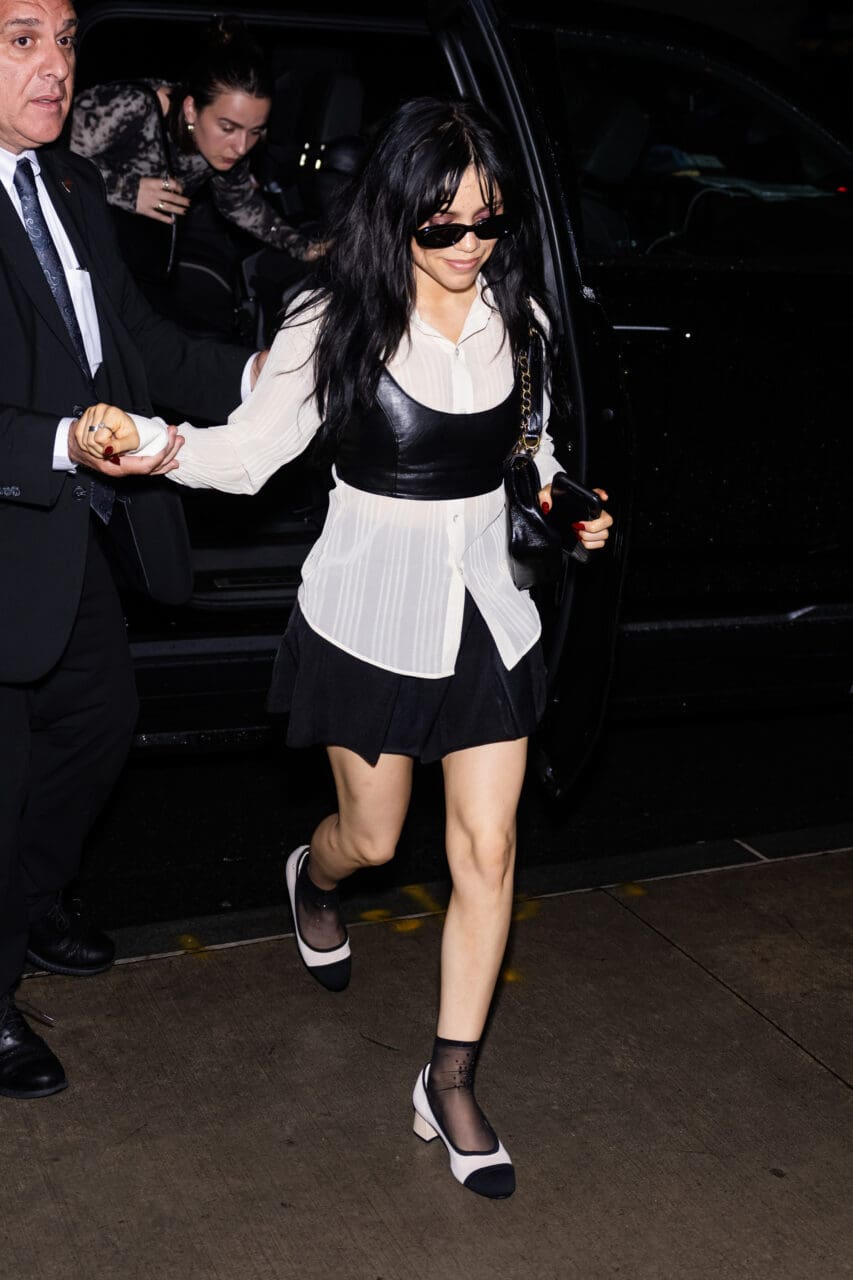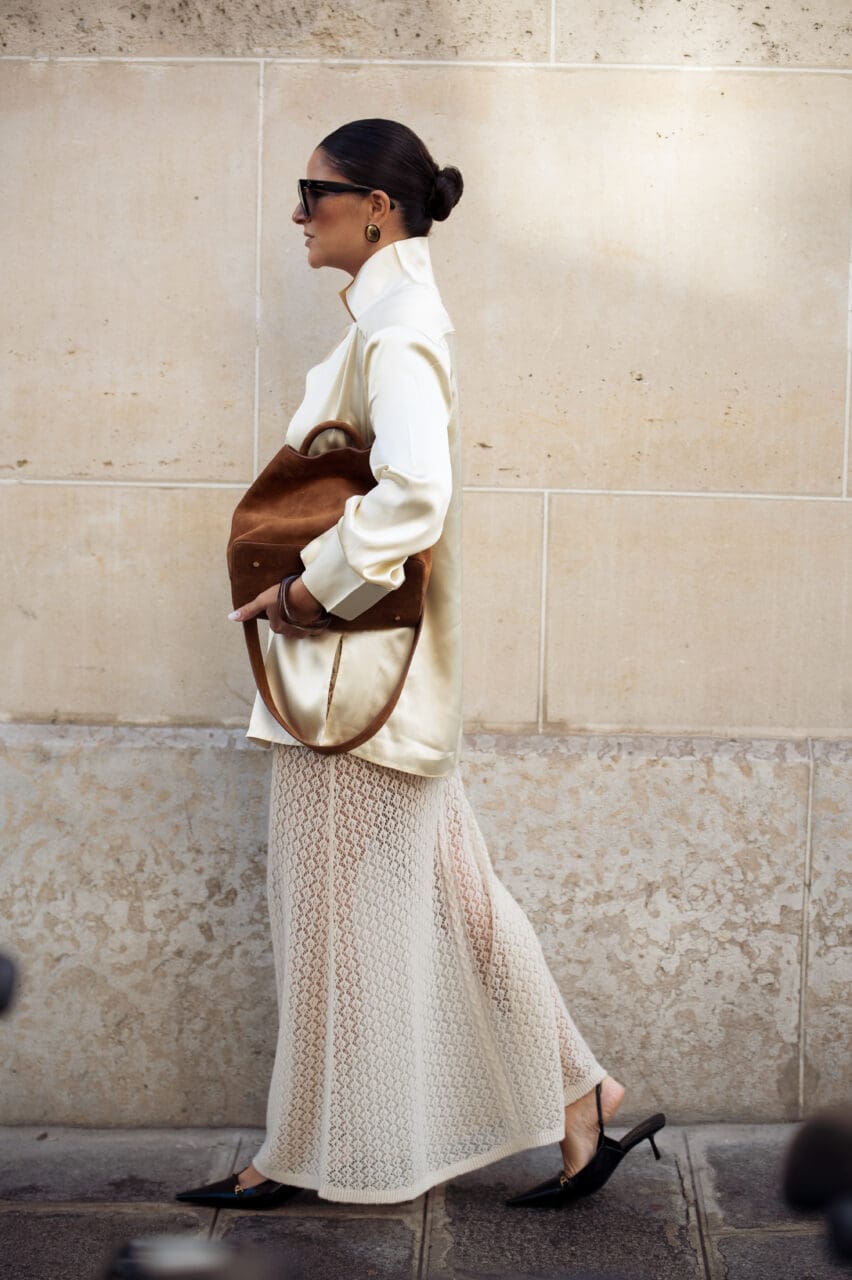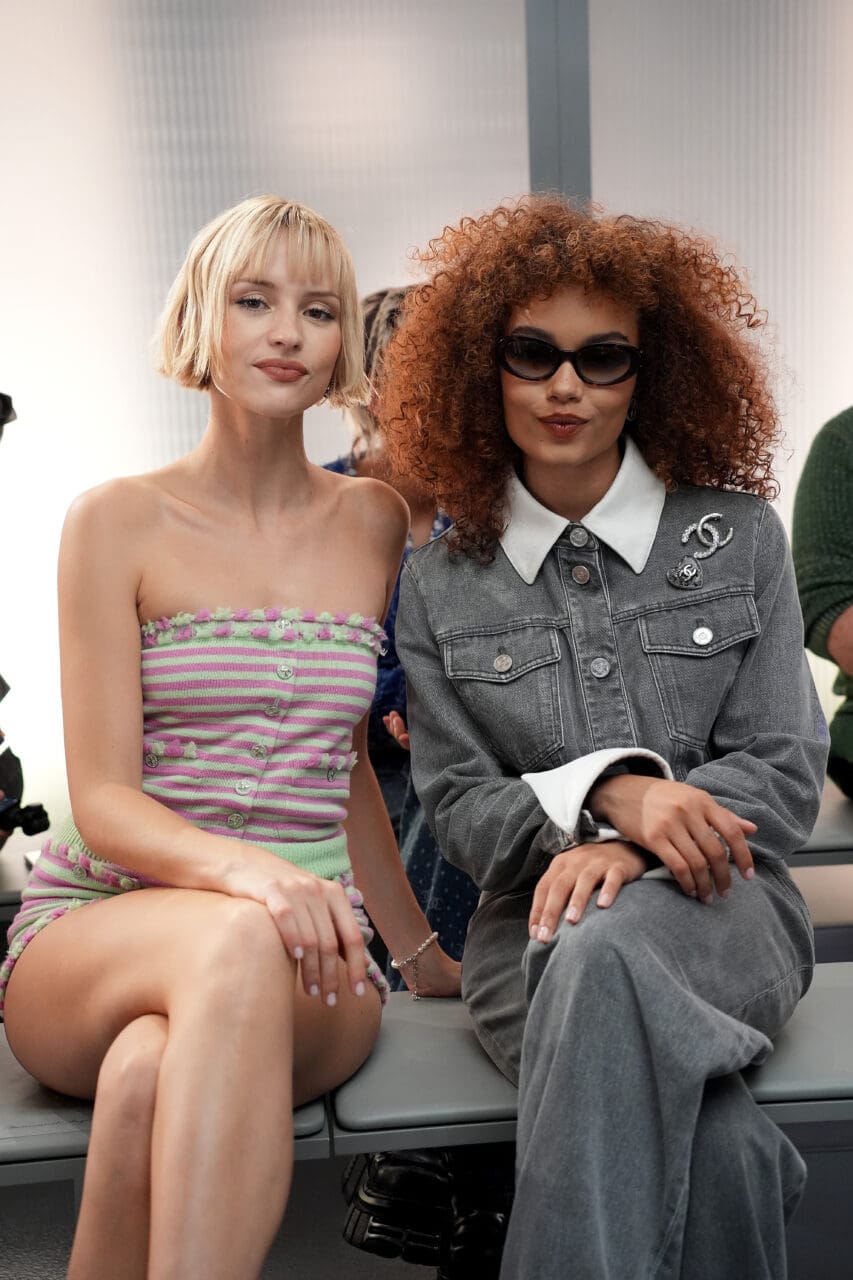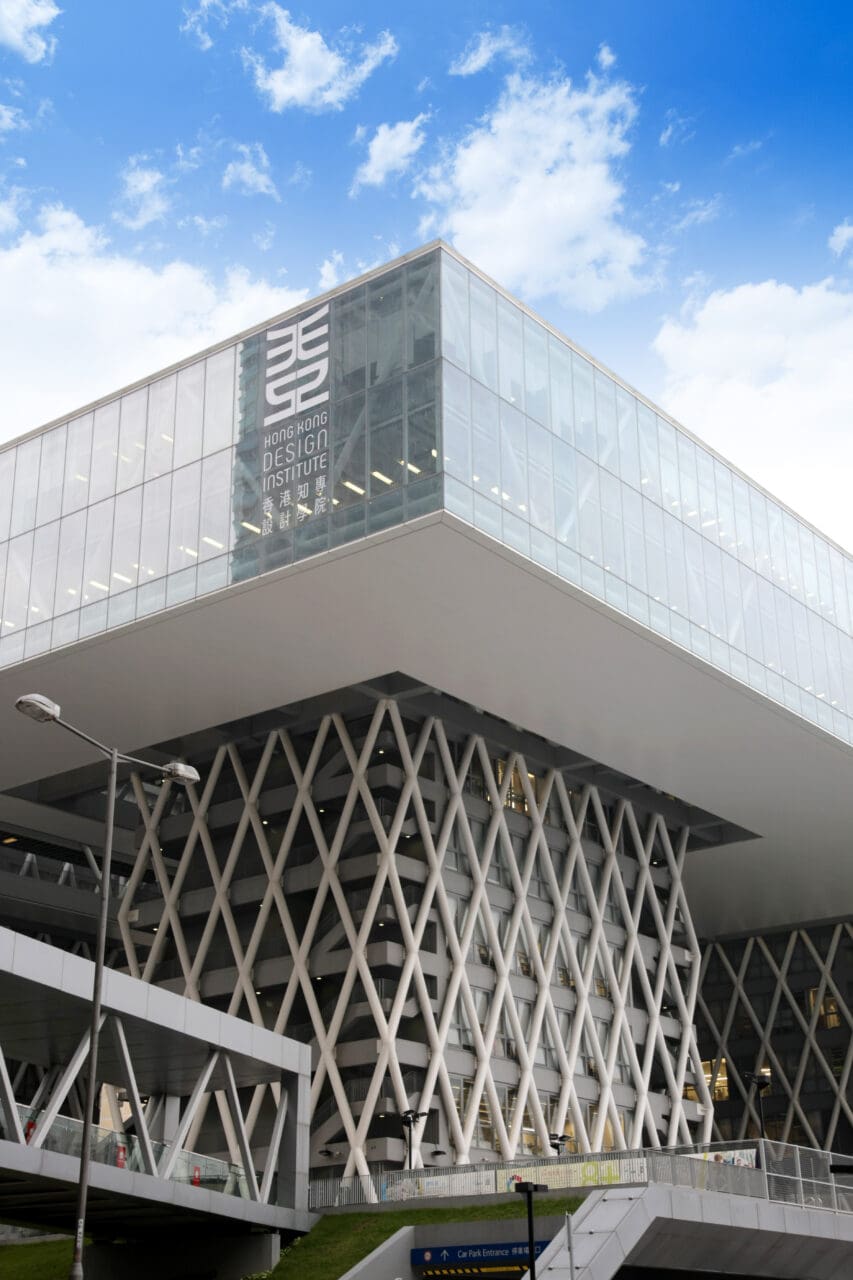Y2K was the main character of the spring/summer 2022 collections. From low-rise jeans to baby tees to the mini-est of miniskirts, the look that had been dominating Gen Z TikTok and Instagram archive accounts made its way onto the runways and into campaigns and editorials. While little is left to be said about the fashion, be it its skimpiness or its skinniness, it’s worth noting that the Y2K trend was avidly embraced. Many of us had seen it all before, but considering the loungewear and athleisure we were all living in during the pandemic, high-octane millennium glam felt fresh.
Now, though, with the spring/summer 2023 collections approaching, Y2K is starting to feel a little played out. How many times can we see baby tees with crystal logos, cargo pants, and low-rise jeans on a runway and call them new? The question is: What’s next?
My best guess is that it’ll be something we’ve seen before. A somewhat made-up but eerily accurate rule states that fashion’s cyclicality sees trends resurface around 20 years after their initial runs. It was true for Y2K, and it was true for ’90s grunge when it came back via Tumblr in the early 2010s. So, here I am placing bets on what comes after Y2K. If you’re still with me, read on to take a trip down memory lane (or to a land of new discoveries, if you’re younger than, let’s say, 20).
Indie sleaze
It’s 2008, “I Bet You Look Good On The Dancefloor” by the Arctic Monkeys is playing on your iPod. You’re wearing ripped tights with worn-out Converse and a big band tee (from Urban Outfitters, not true vintage) cut into a tank with vertiginously deep armholes. Your friend is sporting gold lamé leggings from American Apparel with a tiny dress vest and a skinny scarf. You’re on MySpace, but then start pulling up photos by Mark Hunter, aka The Cobrasnake, to see what your favourite celebrities are wearing. You see party pics where Katy Perry and Taylor Swift are in the crowd, next to maybe Kanye West or perhaps Tavi Gevinson.

Sky Ferreira attends TOMMY HILFIGER After Party at Metropolitan Opera House on September 12, 2010 in New York.
Photo: PATRICK MCMULLAN/Patrick McMullan via Getty Images
Circa 2006 to 2013, the cool-girl aesthetic indie sleaze reigned supreme. Characterised by a grimy, chaotic mishmash of hipster fashion, ’80s maximalism, and ’90s grunge, indie sleaze was lo-fi and DIY but above all hedonistic. It was deeply tied to party culture (and to some values and romanticised aesthetics we have thankfully moved past).
The aesthetic has started to make the rounds on TikTok, with Gen Z ironically leaning into millennial aesthetics before falling for them completely. (Isn’t that how we ended up with Y2K?) Gen Z is loving wired headphones and compact flash cameras in the same way we used to love vinyl records and Polaroid cameras back then.
Can it be any coincidence that The Cobrasnake has just released a book with Rizzoli featuring his photos from the time? Or that The Weeknd and Lily-Rose Depp are about to star in The Idol, a new HBO Max series billed as “the sleaziest love story in all of Hollywood”? Dirty is in again, kids, it’s just high-glam and highly performed now.

A model walks the runway during the Kenzo Ready to Wear Autumn/Winter 2022 fashion show as part of the Paris Fashion Week in Paris.
Photo: Filippo Fior / Gorunway.com
Scene
Neon-coloured skinny jeans, matching Converse, a pair of shutter shades (yeah, those sunnies made popular by Ye, who went by Kanye back in the day). What a time it was to watch the scene kids live their best lives.
Scene was a subculture that started in the early Aughts and became popular through the mid- and late-2000s. While it’s often confused with emo, and some portions of the aesthetic (particularly the hairstyles) do intersect, scene kids or trendies were different. They were into hyperpop, pop punk, crunkcore, and bands like 3OH!3 (cueing up “Don’t Trust Me” as I type). The jeans were skinny, the T-shirts were tight, and the patterns clashed. Eyeliner was thick, belts were studded, and hair was very flat and typically spiked and swooped to the side. Scene fashion eventually became mainstream, with groups like the Jonas Brothers adopting some of the styles and the likes of LMFAO popularising the colours and prints that trendies were pulling off.
Ten-plus years later, the Jonas Brothers are back, Machine Gun Kelly is embodying the halfway point between a trendie and an emo kid, and TikTok e-girls and e-boys are dyeing their hair with the same coloured streaks scene kids were back then. The current male TikToker haircut is basically one blowout away from being the scene kid side swoop. Brands are embracing loud patterns and getting behind the same bright colours we once pushed aside in favour of minimal neutrals. We’re pretty much there.
Twee
The sentence “Zooey Deschanel in 2013” is twee to a T. For those unfamiliar, the aesthetic is marked by whimsy and quirky childishness. It’s cleaned up, buttoned up, and innocent, almost the polar opposite of indie sleaze.
Fashion-wise, think peplums, Peter Pan-collar shirts, pearl necklaces, flared skirts, and tiny bows. Taylor Swift was twee in 2012 when she used to dress like a “1950s housewife” (her words, not mine). And Alexa Chung was the poster child for British twee when she was dating Alex Turner, the lead singer of Arctic Monkeys. It was a love affair between twee and indie sleaze.
Matthew Williams recently put peplums in his spring 2022 ready-to-wear collection for Givenchy, and #twee has 108 million views on TikTok (way over the 23.9 million #indiesleaze has racked up). As both menswear and womenswear become more fluid, we’re bound to see counter proposals in the form of gender aesthetics, and twee is ripe for the taking.
Aesthetics diversified after the first Y2K. With social media sites like MySpace and Hi5 offering windows into other people’s style choices (sorry kids, this is pre-Facebook/Meta, it’s giving digital history), fashion bifurcated endlessly into what are now the myriad of –core labeled aesthetics we consume on TikTok. After the current Y2K fad, fashion isn’t likely to settle on one aesthetic, but keep on splitting into multiple different ones. Of course, the thing about fashion is that it’s always a choice, so go ahead and choose your own adventure.
Editor
JOSÉ CRIALES-UNZUETACredit
Lead image: Dave M. Benett via Getty Images
